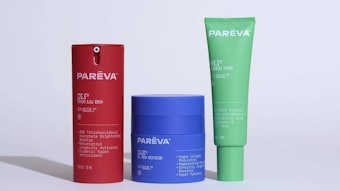Kline & Company's Nancy Mills wrote a piece, "More Than Cosmetic—The New Face of Beauty Retailing," to discuss the ever-evolving beauty retail landscape in the U.S.
Mills writes, "The retail landscape for cosmetics and toiletries in the United States has evolved substantially over the past five years, with retailers no longer considering themselves bound by a particular channel, but instead many realizing themselves as omni-channel, looking to create a seamless shopping environment whether the consumer is in-store, on a computer, or using a mobile device.
"With sales of cosmetics and toiletries in department stores declining over the past five years, the channel remains challenged as the destination of choice for beauty product consumers due to growing competition from specialty stores, direct merchants, and mass retailers expanding their selection. Department stores are consequently refashioning their beauty departments to offer a more modern shopping environment. Various department stores are merging beauty counters, enabling sales and beauty consultants to fluidly sell more than one brand. By contrast, niche brand in-store boutiques are continuing to expand at stores such as Macy’s, Dillard’s and Bloomingdale’s.
"With increased competition from other channels eroding their lead in groceries, the food stores channel is not placing a priority on cosmetics and toiletries, this being reflected in declining cosmetics and toiletries sales over the last five years. Healthily bucking this trend is the natural food stores channel, where cosmetics and toiletries sales are being encouraged by a growing consumer base educated about the advantages of natural and organic products. Whole Foods Market, a leading natural food retailer, is helping to fuel the impetus, with 348 Whole Body departments nationwide and three standalone stores, supplemented by beauty services at some locations, the cosmetic and beauty products offered by this retailer are most notable for what they do not contain.
"Sharing the challenges of other channels, drug stores are additionally being affected by other factors—predominately in the pharmacy area, which is the core of the drug store business—and are consequently enlisting consumables and beauty as a means of encouraging more frequent visits by consumers. To be less dependent upon the pharmacy department, drug chains look to cosmetics and toiletries as a key area for expansion, devoting more floor space to personal care, and expanding product and brand assortment.
"Mass retailers including Walgreens, Target and CVS are providing knowledgeable sales staff in many locations, which is quite different from the shelf-stocking personnel of a few years ago, and affirms their commitment and confidence in the cosmetics and toiletries segment. Walmart and Target remain the two leading mass retailers during 2012 with both chains enhancing their grocery offerings with more fresh foods as a key driver to increase store traffic.
"Additionally, both chains are offering multiple sized retail footprints as they launch smaller units appropriate for less densely populated areas and/or restricted sized high density urban locales, with the emphasis on cosmetics and toiletries dependent upon the format and the location of the store. Walmart however is experiencing problems in many stores, with store traffic reducing significantly and merchandise absent from the shelves.
"Specialty stores are playing an increasingly successful role in the beauty retailing segment, accounting for 10.5% of total cosmetic and toiletry dollars in 2012, up from 9.6% in 2007. Only the direct channel is growing faster. Reasons behind this growth include the aggressive expansion of specialty stores, such as Ulta and Sephora, and an ever greater number of apparel retailers adding beauty products in their inventories.
"The direct sales purchase channel is posting impressive growth in both share and sales. Since 2007, total channel sales for cosmetics and toiletries have posted a compound annual growth rate considerably above the average all-channel growth rate. The highest growth for the entire channel stems from e-commerce, and with the elimination of shipping charges for most beauty purchases over a certain minimum, coupled with shoppers feeling more comfortable making online beauty purchases, this sub- channel is expected to continue its fast growth.
"U.S. beauty retailers are expected to post a 3% growth in sales through 2017, which will primarily come from direct sales and specialty retailers, as these channels take a lead with the modernization and customer engagement through service and social media. Kline’s Beauty Retailing USA delves into great detail of each sub-channel’s performance, for the past five years and forecast.
"Trend-setting Sephora recently opened its 15,000 square foot flagship store in Shanghai, featuring 118 different brands of which 17 are Asian brands, and showing a great example of a successful China market entry. Additionally, there is already a large Sephora store in Hong Kong, plus an additional 143 stores in Asia. Are you planning to expand your beauty business in Asia? Learn about common pitfalls of those firms entering the region, and the unique challenges faced by multinational and local companies with an in depth analysis on the retailing environment for cosmetics and toiletries in four important Asian markets with Kline's Beauty Retailing Asia: Channel Analysis and Opportunities," concludes Mills.










